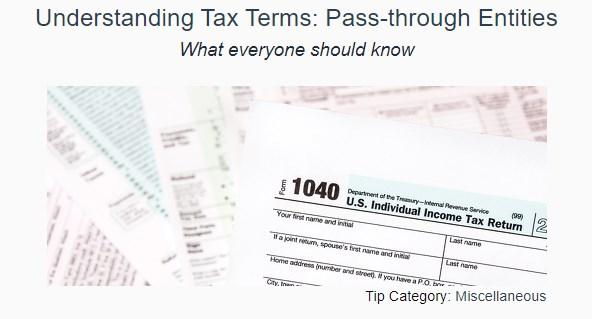
5 minute read
Self Awareness
Self- Awareness is Self-Care: A Journey Towards Mental Wellness
It was in a therapist’s office one day, after years of being overwhelmed and mentally drained, that she made the statement to me, “You have needs that are not being met.” I paused for a moment to reflect on the thought that have needs. For a moment, I was given permission to simply focus on myself and not on others. I was being asked in that moment to consider myself. I was quiet and reflective and suddenly overwhelmed with a sadness that I’d missed me in my pursuit of “things” and people-pleasing. She urged me to take personal accountability for the Importance of prioritizing my mental and emotional needs in addition to my physical needs. What a concept! This was the beginning of a journey of self-awareness and inner healing. I walked out of that space feeling motivated to approach life with fresh eyes.
Advertisement
Self-awareness is key to maintaining mental wellness and to heal from life’s wounds. Unfortunately, the world is not set up or designed for us to take breaks, check in with our emotions or affirm our values. We are unconsciously being conditioned to keep pushing our boundaries and limitations and to produce outcomes. But at what cost? The cost is a mental tax on our health. The cost is lack of enjoyment and engagement in our everyday lives. We self-sabotage and self-abandon and we lose in the end. To start to improve self-awareness, check in with yourself daily with the HALT acronym (Hungry? Angry? Lonely? Tired?) and begin your journey of uplifting yourself with attending to these basic needs. And then go a little deeper to acknowledge your emotional needs (the need to be loved and respected and to be heard to name a few). Write a few things down to affirm yourself, for example “I can take more breaks” or “I am allowed to ask for help.”
It’s ok to have support on this journey towards wellness. A therapist can help you sort through the tools you need to grow in your self-awareness and healing. I encourage you to take the steps towards self-discovery and awareness today.
Victoria L. Henry, MS, LMHC, QS Contributing Writer IG@livelightcounseling Women Wellness


financial literacy
Small business owners have a number of options on how to organize their business for tax purposes. And if you sell items on eBay or Esty, drive for Uber, or offer your services as a writer or programmer, you are probably considered a flow-through entity in the eyes of the IRS. Frankly, so much of individual tax is paid by these small businesses, it is important for all taxpayers to understand this tax code logic as politicians debate trying to increase tax revenues.

How pass-through entities work
Pass-through entities do not pay taxes with a separate business tax return. Instead, the business's taxable income is reported on the owner's individual tax return. A sole proprietor does this on their Schedule C, while other entities like partnerships and S corporations send owners their respective share of profits via a K-1 tax form. Generally, business owners prefer pass-through entities because: • The business income is taxed once instead of twice as in the case of C corporations. • The business format provides owners a level of legal protection that is not available by doing business as a sole proprietor.
What you should know
• Individual tax rates. Changes in individual tax rates have an impact on the amount of tax paid by all small businesses that are organized as pass-through entities. • New 20 percent deduction. A 20 percent qualified business income deduction is available for pass-through entities and sole proprietorships. There are limitations and other complexities involved, but the bottom line is many small business owners will see a tax break due to this deduction. • Owing the tax and having money to pay it can be a problem. Small pass-through business owners must pay income tax on their share of business profits. However, the business entity is NOT required to distribute cash from the company to help pay the tax. So pass-through owners could see a tax bill without money to pay the tax. • Concerns for minority shareholders. Minority shareholders in pass-through entities are doubly cursed. They not only may not receive distributions to pay taxes due, but they are often precluded from selling their shares, and they do not have enough ownership to require distribution of funds through shareholder voting. • Popular business entity type. According to statistics from the IRS, the S corporation formation is a popular business entity type with 4.72 million S corporations in 2017 – roughly three times the amount of C corporations. LLCs are quickly becoming the new entity of choice with growth from 120,000 in 1995 entities to over 11 million entities today.
With 95% of business entities being taxed on personal tax returns, it is important to understand that raising individual tax rates is really an increase in tax to most businesses in the United States.

Kadenia Javis, MBA, RTRP

Ella jumps Sarah’s sassy Billie thumps Carmen’s brassy Gloria croons Aretha’s queen Gladys booms Diana’s supreme! Nat’s king Jimmy plays Marvin sings John sways Miles blows Nancy’s mellow Ray crows Patti bellows! Jazz strokes Gospel provokes Calypso whines Reggae shines Blues soothes R&B smooths Rap grooves Music makes me want to move! Learned to listen at Daddy’s feet Where he would listen to different beats Learned to appreciate with Daddy’s ear All kinds of music I would hear. Learned that music was in his heart

Rolanda T. Pyle Contributing Writer
www.rorosrainbowcommunications.com
That’s how my love for music got its start. (A tribute to the music my father listened to, especially JAZZ! Also a tribute to Ella Fitzgerald, Sarah Vaughn, Billie Holiday, Carmen McCrae, Gloria Lynne, Aretha Franklin, Gladys Knight, Diana Ross, Nat King Cole, Jimmy Smith, Marvin Gaye, John Coltrane, Miles Davis, Nancy Wilson, Ray Charles and Patti LaBelle, who I listened to as I grew up.)
Rolanda Pyle (c) ALL RIGHTS RESERVED





